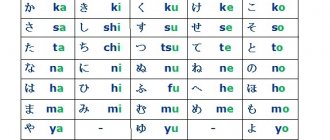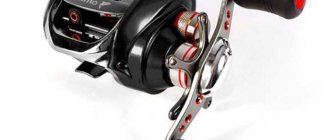The most accessible means of transport in Japan is considered to be a simple bicycle . Bicycles in Japan are inexpensive; the most affordable bike can be bought for about 10,000 yen (about $100) . 85 million bicycles are used in Japan .
Bicycle shop in Japan
In Japan, a bicycle is the most convenient way to get around the neighborhood, for example, to go shopping, get to the nearest station, take your son to kindergarten, etc.
When you first come to Japan, you realize that you have never seen so many bicycles in your entire life.
Even the police have a bicycle here!
During the first months of my life in Japan, I couldn’t get used to the fact that I was constantly cutting off cyclists. At first this caused some inconvenience, both for me and for the cyclists. However, after that you get used to “walking smoothly.”
on trains or buses in Japan
Features of bicycles in Japan
Quite often you can find a bicycle “loaded” with children in front and behind, and the mother sits “at the helm”. It looks impressive!
manufacturers in Japan are quite sensitive to housewives and especially for them they provide space in the front and back for baskets and/or seats for children .
Option with one child seat and basket
Such a bicycle is popularly nicknamed “Mom’s Great” (ママチャリMama Tyari) from the slang word “Great” Tyarinko (チャリンコ).
Also, children must wear a helmet!
I was also a little amazed by the workers in formal suits - Sararimans (サラリーマン from English “ salaried man”
" - a salaried office worker), riding regular bicycles to the nearest railway station to catch the “work” train, but you quickly get used to everything.
An office worker rides to work on his steel horse
Bicycles on the roads of Japan
On large streets there are special road markings for bicycles. If there are no markings, then you need to drive either on the side of the road or on the road itself.
Road markings for bicycles
Also, at some intersections next to the zebra crossing there are markings for bicycles.
I found only one example with such markup, and it was not very successful - everything was half erased
I would like to warn you that according to Japanese law you do not have the right to ride a bicycle while intoxicated and you are severely punished for this .
Also, as far as I know, there are also the following rules for cyclists:
- You can’t drive in the evening with your headlights off
- you can't steer with one hand
- You cannot talk on a mobile phone/hold an umbrella in your hand, etc. (i.e. everything that involves the use of one hand as mentioned earlier)
- You can't take a "passenger"
I can’t vouch for how severely they will be fined for this , because... I myself traveled very little and did not violate any violations, so I cannot provide more details about the practical part.
Japanese bicycle brands
Japan still remains Terra Incognita for us in many ways. Many people have very vague ideas about this country. First of all, memories of geishas and samurai come to mind, then of robots and second advanced electronics and technology, and finally of the fact that they “speak in hieroglyphs.”
That, in fact, is all. Virtually nothing is known about transport. The maximum that comes to mind is the Shinkansen high-speed trains.
It would seem, who would think of riding a bike in a country where the future has arrived in the distant past, since the mass use of bicycles is associated with third world countries. In fact, the two-wheeled horse has not become an anachronism here; it is thriving and, along with the railway, is one of the most popular and widespread means of transport.
The past of the Japanese bicycle industry...
The bicycle entered the destiny of the Japanese approximately 150 years ago, and since then has firmly established itself in this state. In order to trace the development of two-wheeled transport in this state, you will need to turn to history and go back in time.
For more than 250 years, Japan was closed to contacts with foreigners, and only in the middle of the 19th century did it take the path of reform. The Meiji Restoration ended feudalism and the country entered the age of steam, giving a remarkable impetus to the development of trade and industry. Capitalism began to develop at a rapid pace, adopting advanced developments and developing new markets.
Picture of a tricycle in the Yokohama Open Port Publication, 1865
History has not kept the correct date for the time when the first bicycle appeared on the roads of Japan. Judging by magazine and newspaper articles, this happened in 1860, at a time when European and American goods poured into the country. At that time, the leading manufacturers of two-wheeled vehicles were occupied by the British, and the most common bike model were the so-called “simple” or “ordinary” bicycles, also known as “penny farthings”.
The design of these devices used a design with a huge front wheel and small rear wheel, which made it quite unstable and difficult to control and master. Based on this, the Japanese became more fond of the tricycle, which became the simplest and most inexpensive means of transporting goods from one point to another.
By the early 1870s, tricycles had become so popular that special road rules were also introduced for them. However, despite the fact that bikes were well known in port cities like Osaka or Yokohama, in other parts of the country they were still an overseas curiosity.
Japanese "ordinary" bicycle, created in a blacksmith shop, 1897
The demand for bicycles grew every year, and it didn’t take long for the country to have its own production, which was mostly carried out by small blacksmith shops. Two-wheeled cars were mostly produced according to personal orders, and imported samples were taken as a base.
By the end of the 19th century, Japanese bicycles had established themselves as one of the most inexpensive. In the United States, they cost an average of 12 US dollars, while products from American companies were sold for 50 dollars and more. This does not mean that the bikes produced on the islands were of poor quality; a wide production base and inexpensive labor made it possible to keep costs low.
For the next fifty years, the Japanese bicycle industry developed, creating parts and finished bicycles for them. In the second half of the 30s of the 20th century, 2.26 million bikes were produced in the country, almost a good half of which were sold abroad. Japan has become one of the world's leading manufacturers, and bicycles accounted for 16.2 percent of the country's total exports, ahead of all other goods supplied to the foreign market.
Such successful development was interrupted by the outbreak of World War II, and in the first half of the 40s of the twentieth century, only 1.25 million bikes were produced.
Japanese army bicycle
Having been defeated in the war, Japan lost many production capacities. Cities and factories lay in ruins, and in 1945 only 18,000 bicycles were produced. Everything had to be started from scratch.
The period that lasted from the end of the war until the beginning of the 70s of the last century is often called the “dark times” in the development of not only the bicycle industry, but also other industries in the country. Japan now created mostly low-cost copies based on designs from foreign companies, occupying roughly the same market niche that China currently occupies.
The best bikes for the city
The largest sales market was the USA, but here French and English companies ran the show. Despite the fact that Japanese bicycles were not inferior to European examples in quality, and quite often also significantly superior to them, Far Eastern manufacturers exported products aimed at the domestic market, missing the fact that the average consumer in the States and Europe is much taller and heavier Japanese.
The most common Japanese bicycles of that time were 10-speed devices produced under the Royce Union brand. They were made of steel and came in only one size - 20?, which was small for the Americans. Despite the fact that these bikes were equipped with reliable attachments from Shimano, they were, however, too fragile for the Americans.
Finally, American dealers were able to reach Japanese manufacturers and convince them that they needed bicycles tailored for overseas consumers. Thus began the triumphant return of Japanese bicycles to foreign markets.
The first sign was the Nichibei Fuji Cycle Company in the first half of the 70s of the twentieth century, whose three models - Newest, Finest and S-10-S - were on the market. And then new brands and names rained down like from a cornucopia - Miyata, Kawamura, Nishiki and many others, and Panasonic became the most popular and recognizable. The Japanese invasion conveniently coincided with the beginning of a low exchange rate and a bicycle boom in the yen in the United States, which helped maintain very attractive values.
Bicycles from the Land of the Rising Sun went in great demand.
Bicycle 1988 Panasonic DX-5000, 1988
By the beginning of the 1980s, the Japanese took very tough positions. Bicycle tourism has become very popular, and touring bikes have flooded all marketplaces. Unfortunately, these bikes were not produced in a finished form, and the client had to upgrade other types by installing additional equipment.
By 1985, manufacturers finally began producing stock tourers, and the Japanese were again at the forefront of the attack on consumers' wallets. Centurion, Fuji, Miyata, Panasonic, Shogun, Univega and others began supplying these bikes in huge quantities. The US dollar against the yen reached a peak of 260? for 1$.
But the market for touring bikes was limited, and tourers stopped selling. Mountain bikes have become a new trend. Soon, Japanese manufacturers were in for a new crushing blow - the US dollar fell by more than half, their products became too expensive for Americans, and it became easy for no one to sell them.
Many brands ceased to exist, while others began to order parts and components from Taiwan, thereby laying the foundation for the prosperity and power of such titans as Giant and Merida, despite the fact that this is already a completely second story.
... and today's day
The dominance of bicycles made by the descendants of samurai on the world markets is a thing of the past, and in the store you are unlikely to notice many copies with the inscription “Made in Japan”. The share of bikes in the country's exports is negligible. But this does not mean that the Japanese bicycle industry died, unable to withstand competition from Chinese and Taiwanese companies.
Here, as before, there are many companies producing not only spare parts and accessories, but also finished bicycles.
The total number of companies engaged in this business is about one and a half thousand. It goes without saying that for the most part these are small home-based firms, but there are also plenty of big players. Their production is easily aimed mainly at the domestic market, which easily absorbs huge quantities of products. Here are just some of them:
Kuwahara is an Osaka-based company founded in 1918. It produces both finished bicycles and spare parts for them. It achieved tremendous success in the production of BMX bikes.
Her ET model became famous around the world after being noticed by millions of viewers in Steven Spielberg's E.T. This bike is still in production.
Bicycle Kuwahara ET
Panasonic. There is no inaccuracy. The huge concern Matsushita, which changed its name to Panasonic Corporation in 2008, produced under this brand not only electronics, but also bicycles, and from the late 1960s to the mid-1980s it was the favorite among all Japanese exporters who supplied their own products to America.
Today, Panasonic successfully produces bikes of various types - from mountain and road bikes to folding and city bikes.
Miyata. This company, founded in the first half of the 90s of the 19th century, has come a long way from a small weapons workshop to one of the most advanced and successful bike manufacturers. Her first bicycle frames were made from rifle barrels. It is believed that Miyata revolutionized frame manufacturing technology, and it was its engineers who came up with triple butting.
Throughout the cycling boom in the United States, the company was one of the main Japanese exporters, producing bicycles not only under its own name, but also creating bikes in its own factories for brands such as Nishiki, Fuji, Centurion, Panasonic, Lotus and Univega. Now the brand exists as before, and despite the fact that the scale is no longer the same as before, it is still popular not only in Japan, but also in Western Europe.
Miyata bike heading
Fuji is another manufacturer with a proud past, founded at the turn of the 19th and 20th centuries. It played a major role in the cycling boom of the 1970s, producing touring and road bikes. Fuji was also one of the first to create bicycle frames from titanium alloy, but could not switch to producing mountain bikes, at a time when they began their own triumphant march around the world, and its joyful star set.
At the moment, the brand is owned by the American company ASI, and bicycles under this brand are produced in Taiwan, China and also in Poland.
Ides. The products of the Ides company, which creates a variety of bicycles for children and teenagers, are widely known in the territory of the former USSR. Her colorful and high-quality products have gained well-deserved popularity.
Children's bike from Ides
Shimano doesn't lack performance. It is good for a separate article, since its achievements and products are known to everyone who has ridden a bicycle at least once in their life.
Yamaha is another manufacturer of everything in the world. At the moment, their electric bicycles are selling well abroad.
Japanese mamachari Bicycle fate in modern Japan
It is impossible to imagine a modern Japanese without a bicycle. Everyone rides them here - housewives and businessmen, office clerks in business suits and police officers, members and students of the imperial family. Perhaps the only people you won't notice riding a bike are the Yakuza, who are hampered by their "coolness".
There is nothing unusual in this, since almost 40 million people live in the territory of the Greater Tokyo alone - the largest metropolis on the planet. With such incredible overcrowding and the high taxes that car owners are subject to, it is too expensive to maintain a personal car.
But a bicycle in these conditions is exactly what is needed. Those who are younger prefer mountain bikes, employees, and those working in the historical center of the city - folding ones, but the most popular type is the mamachari - the Japanese city bike. The infrastructure is also remarkably developed.
There are parking lots and bike paths everywhere, and if you leave your two-wheeled horse in the wrong place, it will be immediately taken to the penalty area. On the road, a cyclist is god and king, only a pedestrian is higher than him, and in fact, under no circumstances will you encounter road rudeness.
Ordinary Japanese cyclist
The insufficient prevalence of Japanese bicycles outside the domestic market is largely due to the rigidity of the management of manufacturing companies, which is afraid to change established business models. The same mamachari would be in great demand abroad, but they are not supplied to me. Let us remain hopeful that in the near future we will be able to see bikes from the Land of the Rising Sun in domestic stores and enjoy their unsurpassed quality.
Top 10 bicycles (according to their popularity and sales)
Topics that will be of interest to you:
- Larsen brand bicycles
- Bicycle brand Orion
- How to travel by bike
- Road and cyclocross bikes at eurobike 2014
Bicycle racks in Japan
You can’t just throw a bicycle on the street, so in Japan there are special parking lots (駐輪場Churinjo), of which there are quite a lot, regardless of the city. True, you often have to pay for them.
Warning sign prohibiting parking and smoking
Paid bicycle parking
Of course, there are also free bike racks. By the way, I noticed that if you leave your bike in a free bike rack for a long time (more than 2 days), then the bike may not be there, because... “abandoned” bicycles are taken away from the parking lot somewhere (I don’t know exactly what happens to them, because I strictly adhered to the rules).
Free bike parking at the University
Also, some residential buildings have bicycle parking.
Bicycle parking for a residential building
Paid bicycle parking
...and today
The dominance of bicycles made by the descendants of samurai on the world markets is a thing of the past, and in the store you are unlikely to see a large number of copies with the inscription “Made in Japan”. The share of bikes in the country's exports is negligible. But this does not mean that the Japanese bicycle industry died, unable to withstand competition from Chinese and Taiwanese companies. There are still a large number of companies here that produce not only spare parts and accessories, but also finished bicycles.
The total number of companies engaged in this business is about one and a half thousand. Of course, these are mostly small family businesses, but there are also plenty of big players. It’s just that their production is aimed mainly at the domestic market, which easily absorbs huge volumes of products. Here are just a few of them:
Kuwahara is an Osaka-based company founded in 1918. It produces both finished bicycles and spare parts for them. It achieved its greatest success in the production of BMX bikes. Her ET model became famous around the world after being seen by millions of viewers in Steven Spielberg's E.T. This bike is still produced today.
Bicycle Kuwahara ET
Panasonic. There is no error. The huge Matsushita concern, which changed its name to Panasonic Corporation in 2008, produced under this brand not only electronics, but also bicycles, and from the late 1960s to the mid-1980s it was the leader among all Japanese exporters supplying their products to America. Today, Panasonic successfully continues to produce bikes of various types - from mountain and road bikes to folding and city bikes.
Miyata. This company, founded back in 1890, has come a long way from a small gunsmith shop to one of the most advanced and successful bike manufacturers. Her first bicycle frames were made from rifle barrels. Miyata is credited with revolutionizing frame technology, and it was its engineers who came up with triple butting. During the cycling boom in the United States, the company was one of the main Japanese exporters, producing bicycles not only under its own name, but also producing bikes in its factories for brands such as Nishiki, Fuji, Centurion, Panasonic, Lotus and Univega. These days, the brand still exists, and although the scale is no longer what it used to be, it is still popular not only in Japan, but also in Western Europe.
Bicycle Miyata Trailrunner
Fuji is another manufacturer with a glorious past, founded at the turn of the 19th and 20th centuries. It played a major role in the cycling boom of the 1970s, producing touring and road bikes. Fuji was also one of the first to produce bicycle frames from titanium, but could not switch to producing mountain bikes when they began their triumphal march around the world, and its lucky star set. Now the brand belongs to the American company ASI, and bicycles under this brand are produced in Taiwan, China and even Poland.
Ides. The products of Ides, which produces a variety of bicycles for children and teenagers, are widely known in the post-Soviet space. Her colorful and high-quality products have gained well-deserved popularity.
Children's bike from Ides
Shimano needs no introduction. It is worthy of a separate article, since its products and achievements are known to everyone who has ridden a bicycle at least once in their life.
Yamaha is another manufacturer of everything under the sun. Now their electric bicycles are selling well abroad.
Japanese mamachari
Bicycle thefts in Japan
practically no thefts of bicycles , but there are such cases. If you are in Japan for a long time, register your bicycle at the police station, after which you will be given a registration number, and if suddenly it is stolen, then it’s okay - report the bicycle number to the police and they will take care of your case. And no, I'm not kidding! It's true, they will be looking for your bike!
Usually the Japanese don’t worry too much about it being lost - it’s easier for them to buy a new one. And in general, this happens extremely rarely !
That's all I wanted to tell you about bicycles in Japan . Thank you for reading us. If you liked it, share the article with your friends, rate it below, comment and subscribe to our groups on social media. networks to follow new articles.











